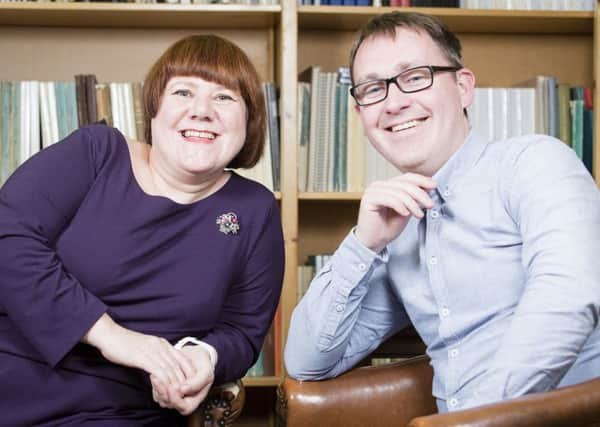Louise Welsh and Stuart MacRae combine for new Stevenson-inspired opera


It’s called The Devil Inside, based on Robert Louis Stevenson’s Faustian short story, ‘The Bottle Imp’; and as with Macrae’s previous two operatic creations for Scottish Opera – Remembrance Day (2009), part of the company’s groundbreaking Five:15 Operas Made in Scotland initiative, and Ghost Patrol (2012) – his collaborator is librettist and crime novelist Louise Welsh.
It’s a partnership that MacRae finds increasingly comfortable, and which inevitably – given Welsh’s penchant for psychological thrillers – finds inspiration in the dark side of story-telling. “Louise had known this story since childhood, and thought it would work really well as an opera,” MacRae explains. “We were looking to do another opera, so she brought it to me and I immediately began to see how well it would work.”
Advertisement
Hide AdAdvertisement
Hide AdStevenson’s original tale, based in the South Pacific, where the author was staying at the time, is about a Hawaiian who buys a bottle containing an imp that will grant him his every desire. If the holder of the bottle dies while still possessing it, his or her soul will be banished to hell. To get rid of it, it must be sold for less than it was bought. Inevitably, there is a point where that trade becomes impossible.
The Devil Inside relocates the action to “a non-specific place”, and renames the original characters. “Stevenson’s original two main protagonists are called Keawe and Kokua. We’ve changed them to Western names, James and his wife Catherine, to make them feel more familiar to our audiences,” says MacRae.
He also reckoned that the predominant focus on the original main character wouldn’t work operatically. “I felt really strongly that his experiences had to be distributed among a wider cast. So, we’ve borrowed things that happened only to James and made them happen to other characters, Catherine and James’ best friend Richard.”
This latest opera is also MacRae’s longest to date, which has brought with it tough challenges, as well as rich opportunities, including the chance to readdress shortcomings he believes existed in his very first opera, The Assassin Tree, written with poet Simon Armitage for the Edinburgh Festival in 2006.
“That was a longer opera than my second, so looking back I was kind of diving in at the deep end: perhaps too much, too soon. It was quite an exposed introduction to the genre,” he recalls. “I’ve learned a lot since then about what does and doesn’t work, part of which was the opportunity to step back and do the shorter opera for Scottish Opera, working very closely with a director and dramaturg, and just having this sense that in a 15-minute opera you have to work out how to compress things and make something happen with the characters in a short period of time.”
The progression from shorter works to his first full-length opera – “at around 90 minutes it just qualifies,” says MacRae – has been “a really good journey”. He cites Alban Berg’s grim 1920s opera Wozzeck as a model for The Devil Inside, as much from necessity as desire.
He’s referring to Berg’s structuring process, where each scene has its own distinctive musical identity. “Unlike my earlier two collaborations with Louise, where I more or less had a completed libretto to work on from the outset, we worked on this one much more on a to-and-fro basis,” he reveals.
Advertisement
Hide AdAdvertisement
Hide AdMacRae started composing with only a couple of the eventual seven scenes to hand. “So I would be composing these while Louise was writing the next two. It’s the first time I’ve started an opera without knowing exactly how it’s going to end.”
It helps, he says, that each new scene jumps ahead in time from the last, and even where earlier musical ideas reoccur, as in the final scene, he “knew the character of that scene would be substantially different. This was never an opera that would be through-composed from beginning to end; more an opera consisting of seven distinctive pieces.”
He’s comfortable working with the same team that created the earlier operas, including conductor Michael Rafferty, director Matthew Richardson and designer Samal Blak. The cast is small, the orchestra chamber-sized, but the aspirations for next week’s Scottish premiere and ensuing performances around the UK and in Canada are monumental.
MacRae admits to having the opera bug. “I’d jump at the chance to do another one,” he says. “But we’ve got to make this work first. An opera’s like a calling card. You’re only as good as your last success.”
• Scottish Opera and Music Theatre Wales perform Stuart MacRae’s The Devil Inside at the Theatre Royal Glasgow, 23 and 26 January, and Edinburgh Festival Theatre, 29 and 30 January, www.scottishopera.org.uk